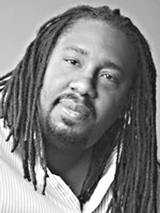Anti-Violence Project notes more reports of battery, and little support from court system
The New York City Gay and Lesbian Anti-Violence Project announced this eek that reports to them of domestic violence in LGBT relationships increased 16 percent in 2003 and 21 percent in 2004.
“We’ve seen a steady rise in reports of domestic violence and the level of violence involved over the last two years,” said Clarence Patton, acting director of AVP. “In 2004 alone, there was a 35 percent increase in serious injuries and a 71 percent increase in deaths or murders that occurred as a result of the violence.
While Patton believes that “it is good that people are coming forward,” the problems being presented are grim.
Diane R. Dolan-Soto, AVP’s director of programs and a co-author of the report, said that there was in 2004 a 16 percent increase in the use of weapons in these batterings and “we had twelve deaths.”
“Although reporting has gone up,” she said, “what we are seeing is an increase in violence in relationships where there is already abuse.”
Asked to identify some factors that have contributed to that increase, Dolan-Soto said, “We’re living in a society that is in the middle of a war, that condones violence against LGBT folks, and is even willing to codify in the constitution that gays don’t have legal rights. And for some gay people that equates to increased stress and pressure on LGBT people and couples and internalized homophobia. The partner that can’t control his or her anger is turning that on the other partner.”
The report also highlights the fact that New York State is not hospitable to LGBT survivors of domestic violence, who have no access to Family Court to obtain orders of protection unless they are married or have a child in common with their partners.
“That leaves out the vast majority of unmarried people, most of whom are not LGBT,” said Patton, but bills in Albany to correct the situation and recognize other family structures have died.
“Family Court is overburdened,” said Patton, “but there are mechanisms there to better address the needs of domestic violence victims and perpetrators.”
As it stands, the battering partner has to be guilty of an arrestable offense for Criminal Court to grant an order of protection to an unmarried victim.
Asked why there has been no progress in the State Legislature, Patton said, “It is not a leadership issue” and went to note that even beyond the indifference of those who head up the Senate and Assembly, there is resistance from the right wing “who don’t want to validate these relationships.”
Access to shelter for gay male, transgender, and even lesbian survivors of abuse is a continuing problem, but some progress is being made on that front. AVP has hosted the LGBT Domestic Violence Network for the last three years, bringing together service providers from around the state. That has led to a special collaboration with Safe Horizons, a victims’ services group, to provide dedicated beds for LGBT survivors.
“We still need more beds,” said Dolan-Soto, “but any of our clients who have had to go through the shelter system has found housing and employment. That’s pretty amazing.”
“When I started at AVP in 1996,” Patton said, “there was one bed for a man, only available when a woman wasn’t there. Just the very way in which we talk about what domestic violence is in our community can fly in the face of the historic paradigm that the anti-domestic violence movement is built on. It comes out of women’s rights movement that women and victims and men are batterers. We say that is not always the case. When you’re trying to move brick and mortar operations like shelter space, which is already limited, you have to look at building a bigger pie.”
The full 24-page New York Lesbian, Gay, Transgender and Bisexual Domestic Violence Report 2003/2004 is available online at avp.org.
gaycitynews.com

































